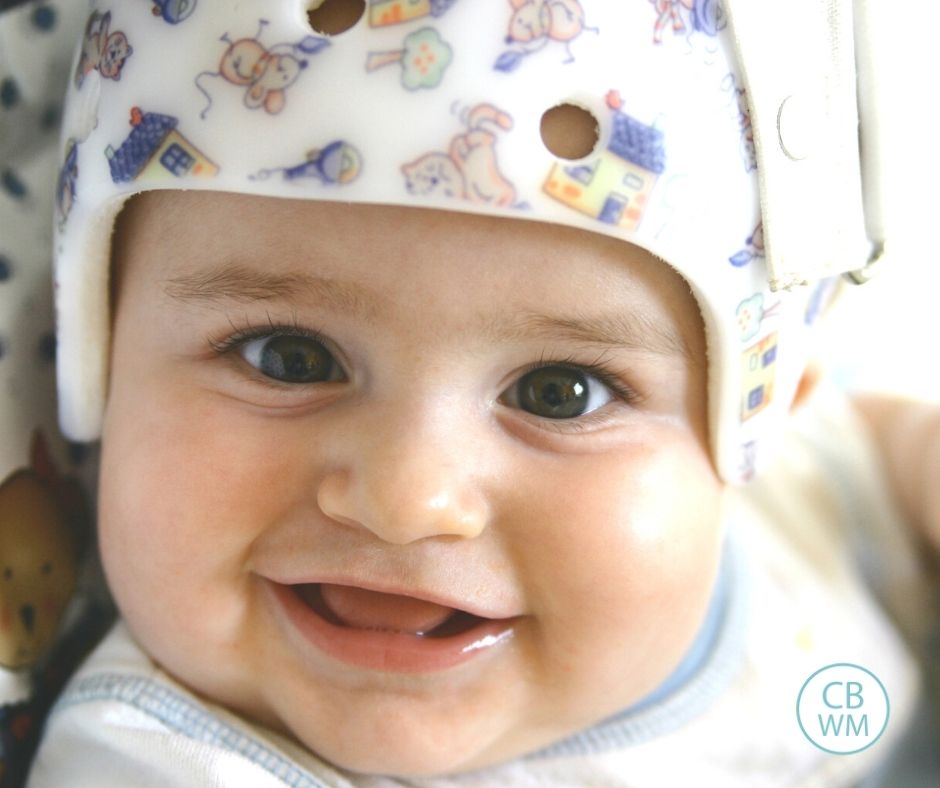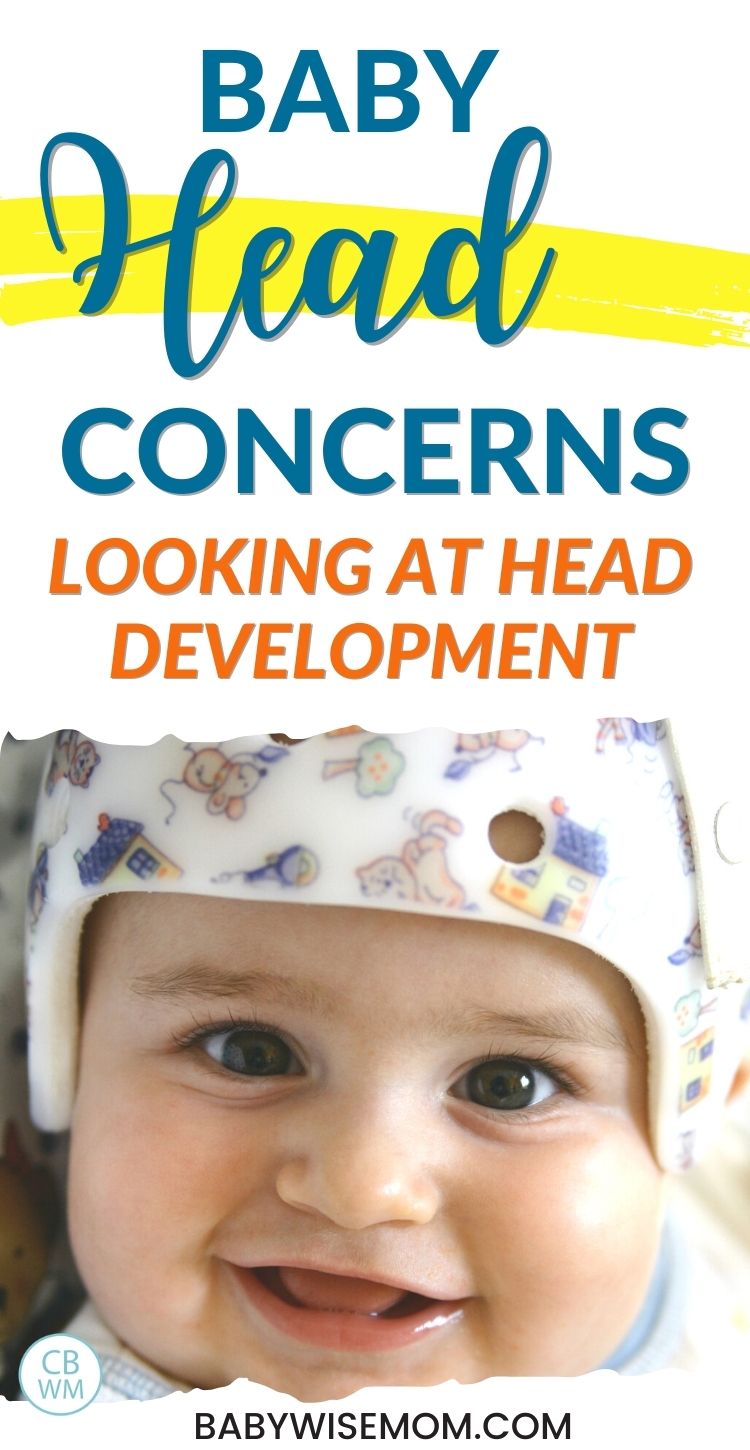4 common head concerns for baby. Learn what is normal, what to watch for, and when you should contact your baby’s doctor.

A while ago, I told you about a very informative book I was sent to review called Baby Body Signs
So let’s talk head! The head is an important part of the body, so if you feel concerned, you will probably be really concerned! Here are four areas to pay attention to, what is normal, and when to talk to baby’s doctor.
Soft Spot
“Your baby’s soft spot should feel firm and very slightly curved inward”.
(page 15)
Your baby has 6 soft spots, though usually only two are noticed.
A baby’s soft spot might bulge when baby is crying or otherwise upset, and sometimes when lying down, but if baby is picked up and calm, there should be now bulge.
If your baby’s soft spot always bulges, call your doctor for a consultation and check-up.
There is also a possibility of the soft spot being sunken in. Sometimes this is normal, but it can also be a sign of dehydration, so if your baby is not having correct diaper output, has sunken eyes, and/or is lethargic, take baby to doctor, and if it is after hours, you will need to go to the ER.
If there is an extra soft spot (more than two noticeable), it can be a sign of something wrong with the brain. Some things are treatable while others are not.
You don’t want baby’s soft spots to be too large, but you also don’t want them to be too small.
The good news is that doctors check this routinely at your well-baby visits, so make sure you go to those so the doctor can monitor these things.
Head Shape
In the past, some cultures used measures to shape the heads of the infants to signify social status. This happened in places like Iraq, France and other parts of Europe, and is believed to have happened in Egypt. It still happens in some cultures in South America.
Head shape can vary based on how baby sat in the uterus, how baby was delivered (and the size of mom/baby ration during vaginal delivery), how baby sleeps (back, side, tummy), and how baby spends most of his time.
Too much time with pressure on one point of the head can lead to a misshapen head.
Head shape is one reason tummy time is very important, as is varying playing locations for baby.
>>>Read: How To Do Tummy Time Even if Baby Hates It
If you bottle feed baby, alternate which arm holds baby to vary the pressure on the head. You might also vary which way you lay baby in the crib (meaning which end the head is on).
If you notice your baby has a mis-shapen head, be sure to point it out to your baby’s doctor.
Some mis-shapen heads are signs of a bigger problem, and some need some form of correction or intervention.
However, if your baby’s doctor recommends head surgery, be sure to get a second opinion. The AAP says there are a number of unnecessary surgeries since a head shape from sleeping on the back is similar to a more serious condition that needs surgery.
Head Size
My kids all have big heads, so I am very used to my doctor watching their head sizes very closely. A large head is usually nothing to worry about, but it can be a sign of too much fluid on the brain.
A head that is too small can be due to the soft spots fusing prematurely or the brain not growing properly.
In the end, the actual size is not as important as the rate of growth. Baby’s head should be measured at each well-baby check-up.
Head Banging
Some children bang their heads for a number of reasons. Some do it to help fall asleep. Some do it during tantrums. Some do it because they are overstimulated, some because they are understimulated.
>>>Read: How to Tell if Baby is Overtired vs. Undertired
Some children bang their heads when they have Autism or Asperger’s Syndrome.
For most children, headbanging should not last more than 15 minutes. If your child is doing this out of anger, your child might accidentally hurt himself.
Conclusion
Pay attention to your child’s head and bring any concerns to the attention of your doctor. Watch for sudden changes, and look at pictures to spot changes that have happened more slowly.
I also have to say I really enjoy this book. It is a great source of information and most often a relief for a parent who is wondering if something is normal or not.
Related Posts

